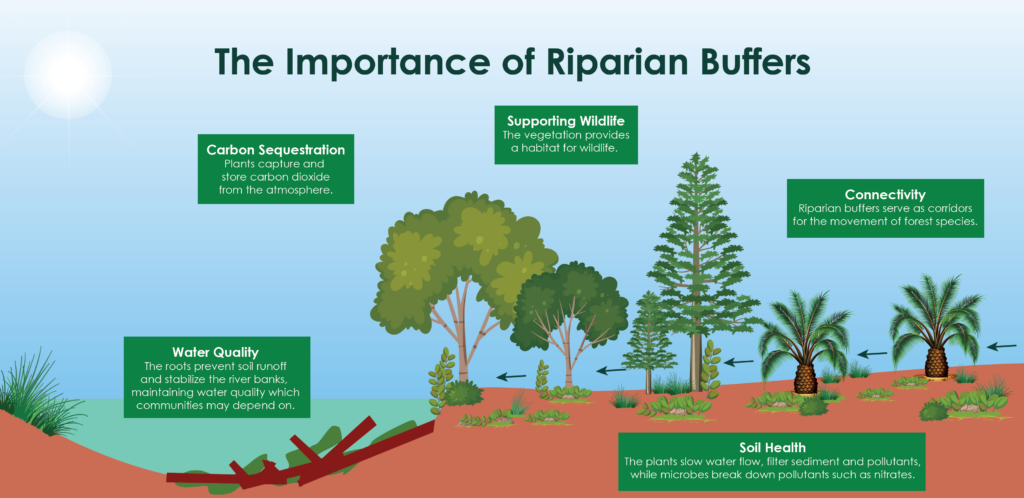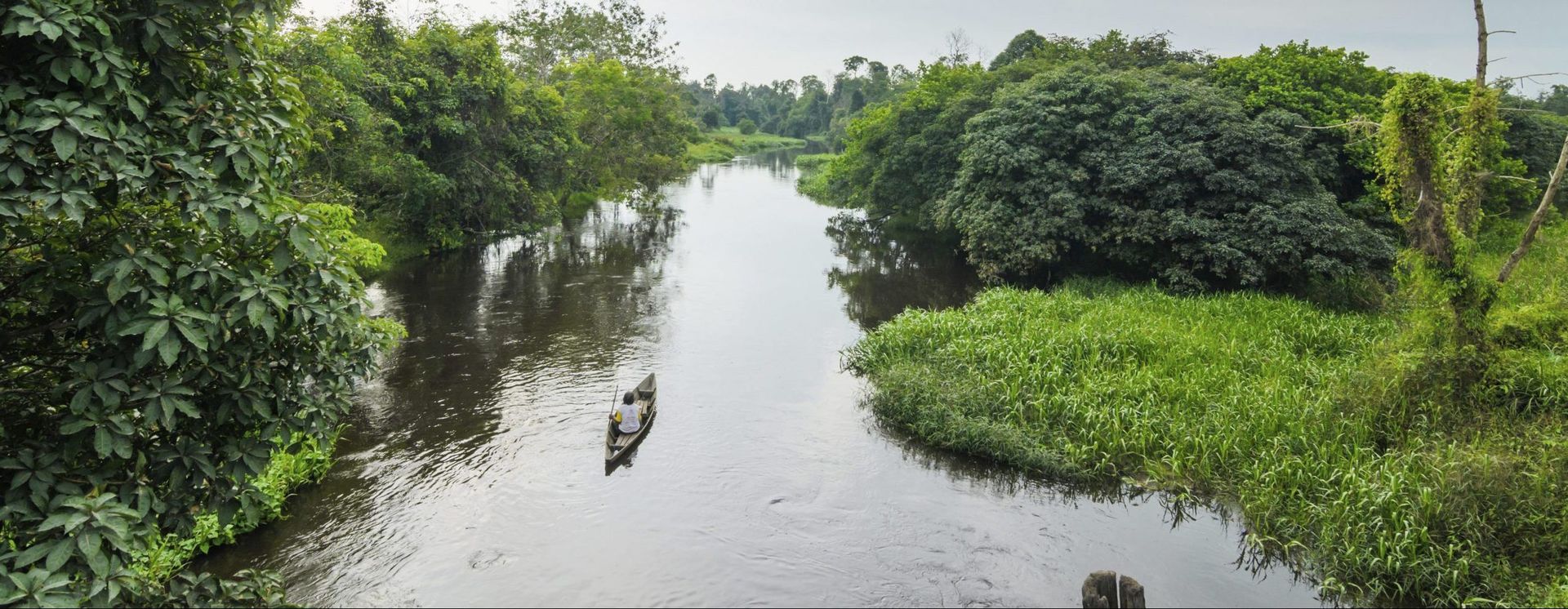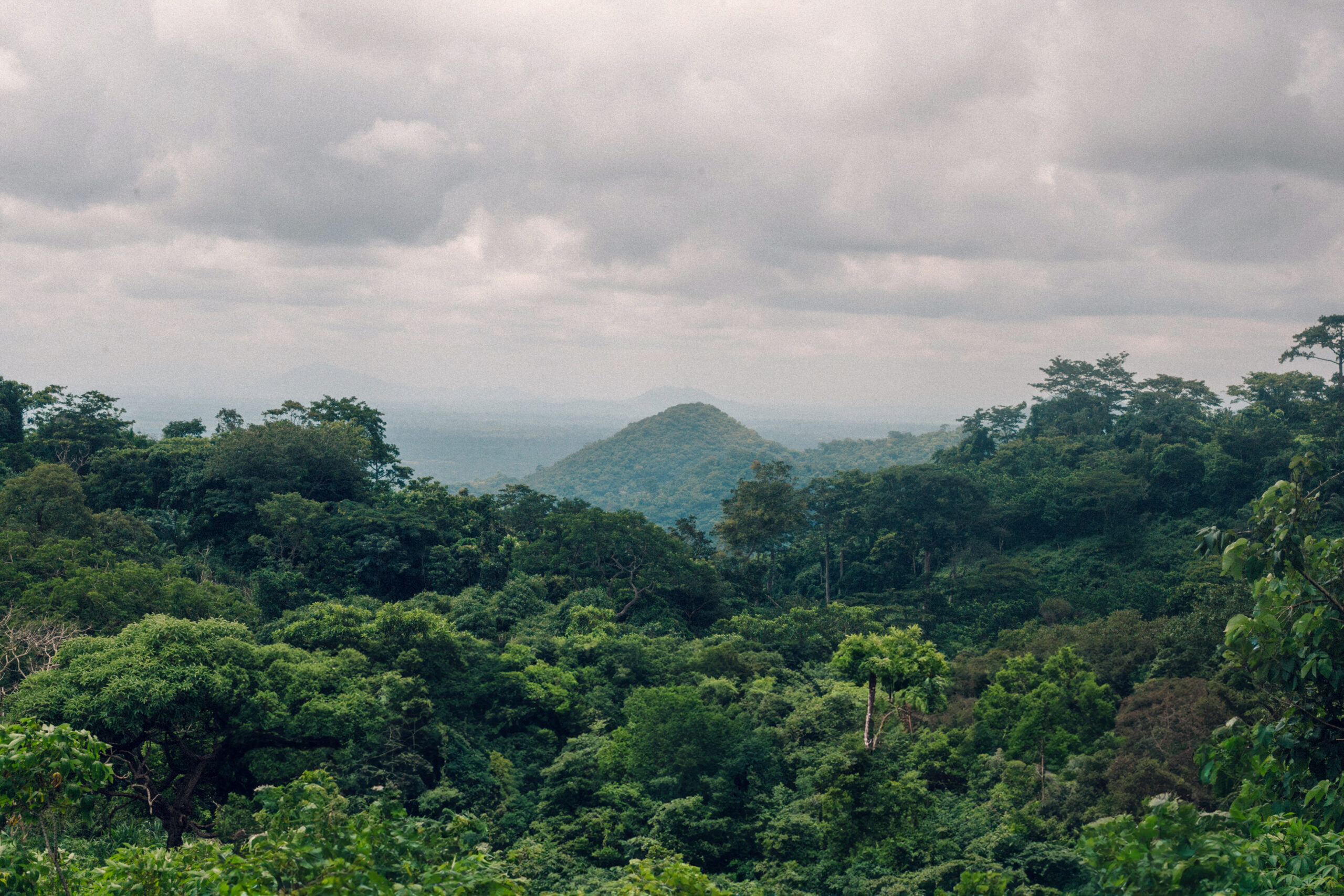With competing demands for land use, agricultural lands are under pressure to be highly efficient and productive. However, it’s as important to ensure that practices are sustainable so that the lands remain productive, and do not degrade the ecosystems around them.
One important aspect is the interaction of plantations with surrounding water bodies. The plantations may need the water bodies for irrigation but fertilizers used in the plantations can deteriorate the water quality, among other issues. To prevent such risks, Musim Mas plants corridors of forests around our plantations, known as riparian buffer zones.
These riparian buffers play a crucial role in enhancing water quality and supporting the health of an entire ecological region. What’s a riparian buffer exactly? Let’s look at what they are, why they’re essential for sustainable agriculture, and what Musim Mas is doing to preserve them.
What are Riparian Zones?
Riparian buffer zones are also known as riparian strips, riparian woodlands, or riparian forests. It’s the junction where the riverbank meets the river or stream- where the aquatic and terrestrial habitats meet. Utah State University refers to them as “green ribbons of life alongside streams1.”
Potentially rich in flora and fauna, these riparian buffers are known as such because they trap and filter sediment. This action is one of the most significant ways they support the environment. By filtering pollutants, they help to preserve and improve water quality. Particularly in areas experiencing rapid land-use changes, riparian zones are an essential element of natural resource management as they can support the provision of safe water.
Why are Riparian Zones Necessary to Support the Environment?
-
Soil Health
Riparian zones filter particles and absorb marine pollutants such as nitrates. Nitrates are used in fertilizers and are essential for many crops but are harmful to aquatic ecosystems. Microbes in the soil in these buffers naturally break some of these down.
-
Supporting Wildlife
These buffers provide a habitat for amphibians, insects, and other forms of wildlife.
-
Connectivity
They also provide a forested corridor that aids wildlife movement, supporting biodiversity.
-
Carbon Sequestration
The plants in the riparian buffers help sequester carbon from the atmosphere.
-
Maintaining Water Quality
A common issue with agricultural lands is soil runoff and erosion, which affects water quality. Riparian buffers help reduce these issues and stabilize the river banks. Maintaining water quality isn’t only important to aquatic life. Many local communities also depend on the local rivers.

How do Riparian Zones Work?
To serve their many ecosystem functions, the vegetation in the buffers act like sponges. Common examples of such plants are sedges and rushes. They soak up water runoff, nutrients, and pollutants. The riparian vegetation slowly releases water back into the stream or river, preventing overflow and reducing erosion.
Many natural factors can influence a riparian buffer. These include soil, topography, water supply, and climate. Human factors like farming, grazing, road construction, land development, dams, and logging can also inhibit the healthy functioning of a riparian zone.
Musim Mas’ Commitments
When planting for the next generation, the health of riparian buffers is one of the key considerations for Musim Mas. Riparian buffer zones of 50-meters are maintained for small rivers and 100-meters for wide rivers2.
As a member of the Roundtable on Sustainable Palm Oil (RSPO), Musim Mas is guided by RSPO principles on conserving natural vegetation within and alongside natural waterways. In addition, the group conserves areas of environmental/ecological importance using the High Carbon Stock (HCS) and High Conservation Value (HCV) approaches. Musim Mas’ total conservation areas have gone from 19,200 hectares in FY 2016 to over 28,200 hectares in FY 2020.
Musim Mas goes even further than legal requirements and voluntary codes. The group conducts regular water quality evaluations to support better riparian buffer health. Regular biodiversity surveys are conducted to assess the population of birds, butterflies, reptiles, and small mammals. In recent years, new areas have been added to Musim Mas’ conservation hectarage, including riparian buffer zones3.
Summary
Rich in life and providing a range of ecosystem functions, preserving riparian buffers is essential. Along with many other ecological and conservation efforts, Musim Mas is committed to the reforestation and enhancement of riparian zones. Sustainable palm oil starts with a sustainable landscape, after all.
References:
- Utah State University: Riparian Zones
- Musim Mas: Environmental Protection
- How Can We Support Biodiversity In Oil Palm Landscapes?








